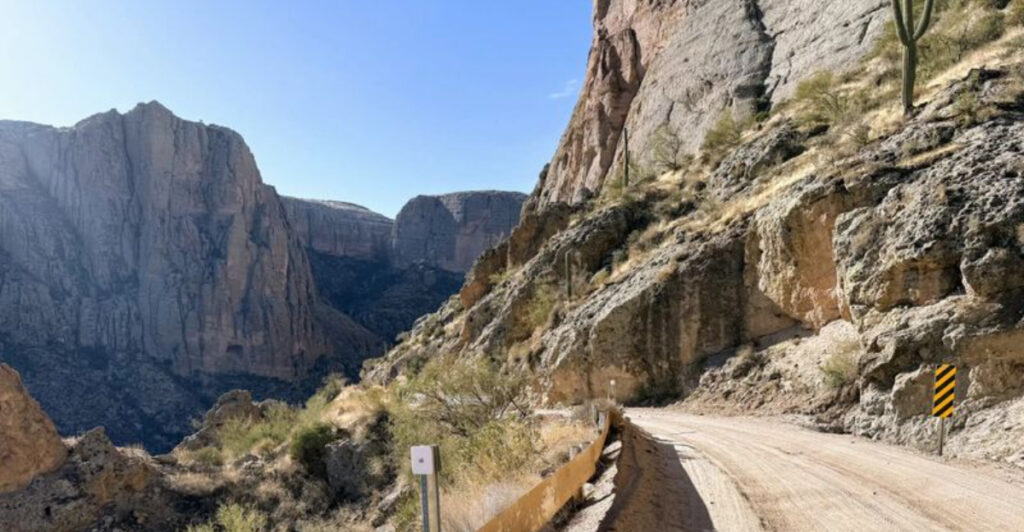Discover the marvels of Arizona’s Apache Trail, a historic route with breathtaking cliffside roads that blend natural beauty, rich history, and thrilling adventures. This trail, also known as State Route 88, offers a journey through rugged canyons and past historic landmarks, providing a unique glimpse into the heart of Arizona’s landscape and heritage. Join us as we explore ten fascinating facts about this iconic route, each offering a distinct perspective on its significance and allure. Whether you’re a history buff, a nature lover, or an adventure seeker, the Apache Trail promises an experience like no other.
1. Historical Significance
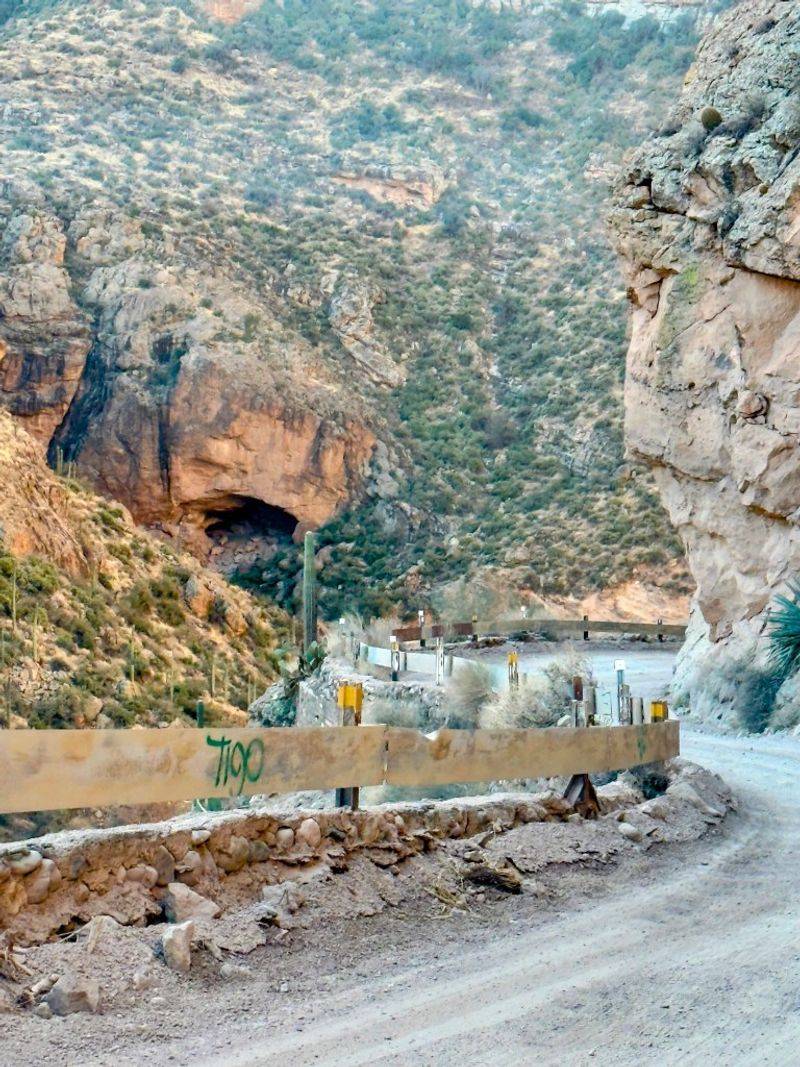
In the heart of Arizona’s wilderness lies the Apache Trail, a route steeped in history and adventure. Originally developed in the 1860s by ranchers and pioneers Lewis and Pranty, this trail played a pivotal role in the region’s development. It was later reconstructed in 1904 to accommodate freight for the construction of the Tonto Dam. This transformation marked the beginning of its significance as a crucial transportation route. The trail’s historical roots are evident in its rugged paths and vintage charm, where every curve tells a story of perseverance and exploration. Its legacy continues to captivate visitors, offering a glimpse into Arizona’s pioneering past. The journey along the Apache Trail is not just a drive through beautiful landscapes but a passage through time, where the spirit of the Old West comes alive. Experience the allure of history as you traverse this iconic route.
2. Scenic Beauty
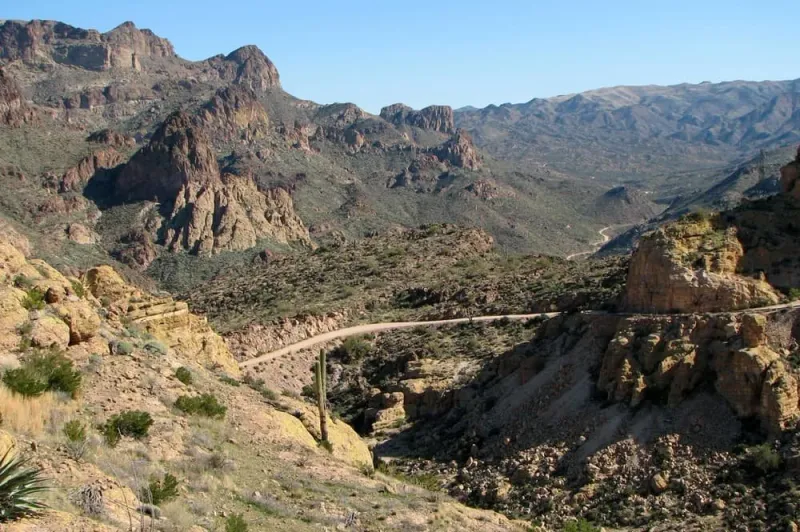
Winding through Arizona’s majestic Superstition Mountains and Tonto National Forest, the Apache Trail offers one of the most scenic drives in the Southwest. This breathtaking route presents stunning views of rugged canyons, towering saguaro cacti, and the shimmering Salt River. As you meander along the trail, the landscape shifts dramatically, each turn revealing a new vista of natural beauty. The vibrant colors of the desert come alive, making it a paradise for photographers and nature enthusiasts alike. Whether you’re catching a glimpse of the wildlife or simply soaking in the serene atmosphere, the Apache Trail promises a visual feast. With each mile, the road showcases an unparalleled connection to the land, inviting travelers to pause and appreciate the wonders of nature. It’s a journey that transcends the ordinary, leaving a lasting impression of Arizona’s wild beauty.
3. Fish Creek Hill
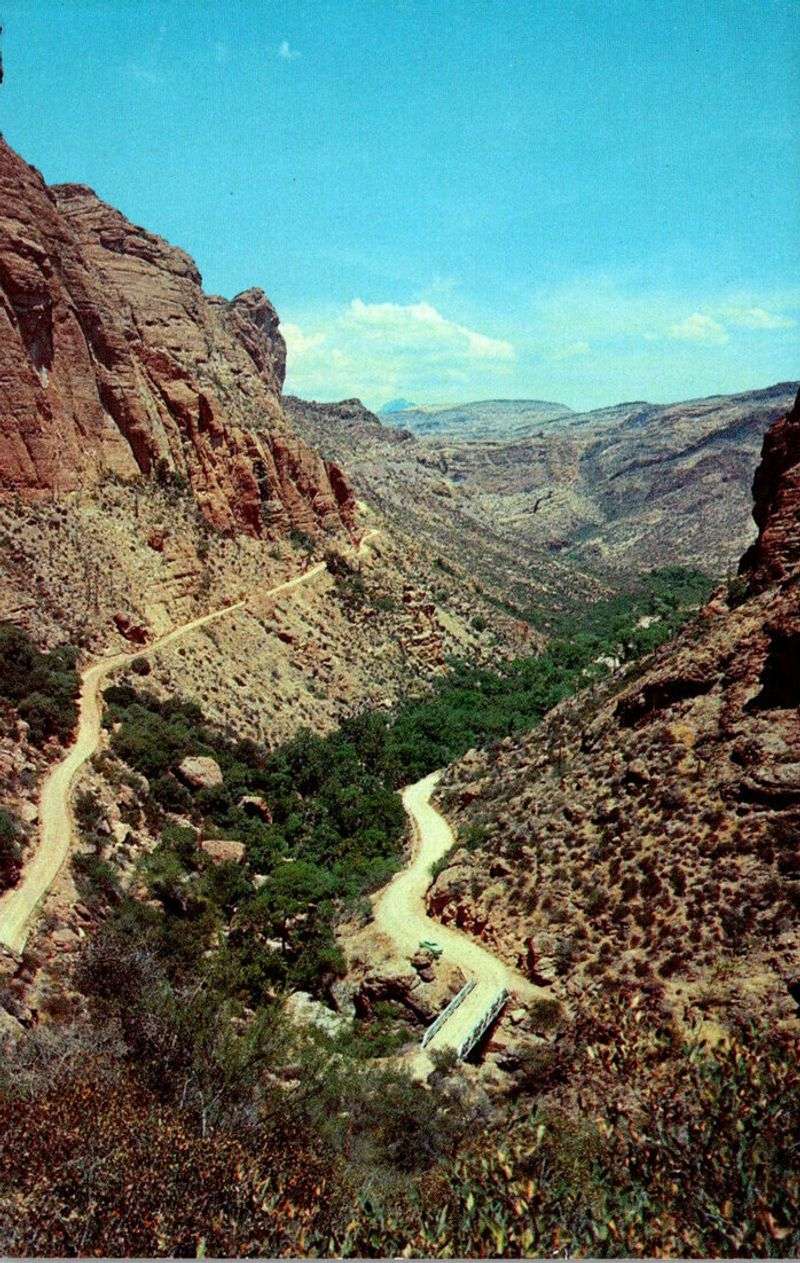
For thrill-seekers and seasoned drivers, Fish Creek Hill is the ultimate test of skill and nerve. This challenging segment of the Apache Trail features a steep descent of approximately 1,000 feet, with a daunting 15-17% grade. The sharp curves and minimal guardrails demand utmost attention and precision. It’s a drive that promises adrenaline and awe, offering panoramic views of the surrounding cliffs and valleys. The rugged terrain and natural beauty make it a highlight for those seeking an unforgettable adventure. While the drive may be daunting, the rewards are immense, with each twist and turn unveiling the raw magnificence of Arizona’s landscapes. For those who dare to take on Fish Creek Hill, the experience is both humbling and exhilarating, a testament to the enduring spirit of exploration that defines the Apache Trail.
4. Unpaved Sections
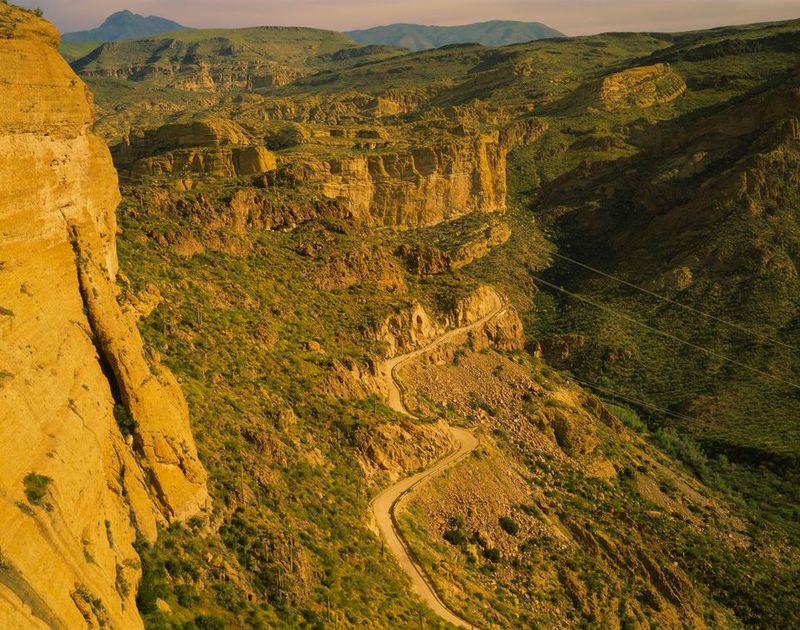
Beyond the quaint stop of Tortilla Flat, the Apache Trail transforms into a narrow, unpaved path that challenges even the most experienced drivers. This section is not suitable for large vehicles or trailers, adding an element of rustic adventure to the journey. The rugged terrain and dust-laden air evoke a sense of the untamed, offering a slice of Arizona’s wild frontier. Travelers are advised to proceed with caution, as the road’s unpredictability adds to its charm and challenge. The remote and desolate atmosphere enhances the sense of exploration, making each mile a testament to endurance and discovery. As you navigate the unpaved sections, you’re not just driving; you’re embarking on a journey into the heart of the desert’s raw beauty and mystery.
5. Historic Towns
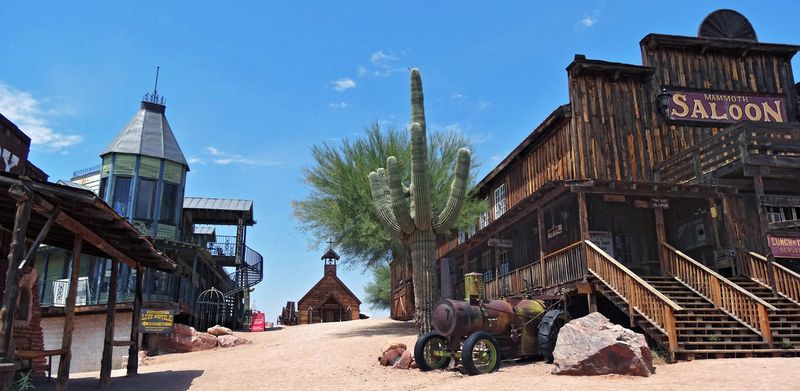
The Apache Trail is more than just a road; it’s a gateway to Arizona’s storied past. Along the way, visitors can explore historic towns like Goldfield Ghost Town, a reconstructed 1890s mining town that offers a glimpse into the bygone era of prospectors and pioneers. With its wooden buildings, old saloon, and tales of gold rushes, Goldfield captures the imagination of all who visit. Just a short drive away, Tortilla Flat stands as a testament to the stagecoach era, now known for its charming saloon and general store. These towns, rich in history and character, provide a nostalgic escape into a world where the spirit of the Old West lives on. The stories and legends from these towns add depth to the journey, making the Apache Trail a corridor of cultural exploration and historical intrigue.
6. Canyon Lake
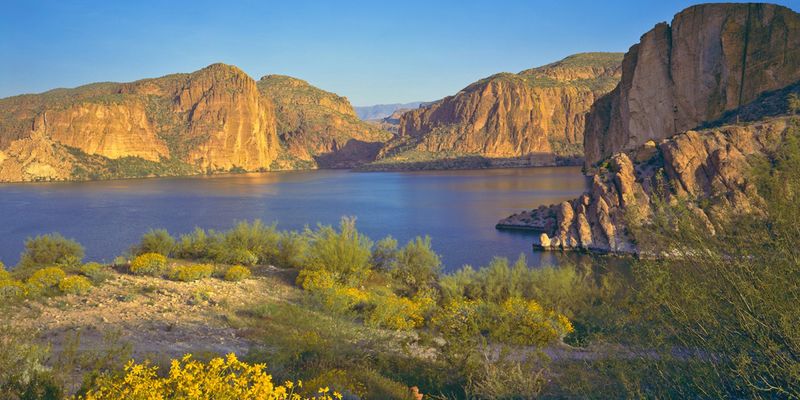
Amidst the dramatic landscape of the Apache Trail lies Canyon Lake, a man-made wonder created by the construction of the Salt River Dam in 1911. This picturesque lake, with its crystal-clear waters and rugged cliffs, offers a tranquil retreat for those seeking recreational activities such as boating, fishing, and scenic cruises. Whether you’re paddling through the serene waters or enjoying a leisurely picnic by the shore, Canyon Lake provides a peaceful escape from the arid desert surroundings. Its unique blend of natural beauty and recreational opportunities makes it a beloved spot for locals and tourists alike. The lake serves as a reminder of the ingenuity and effort involved in harnessing water resources in the desert, enriching the Apache Trail experience with both relaxation and inspiration.
7. Theodore Roosevelt Dam
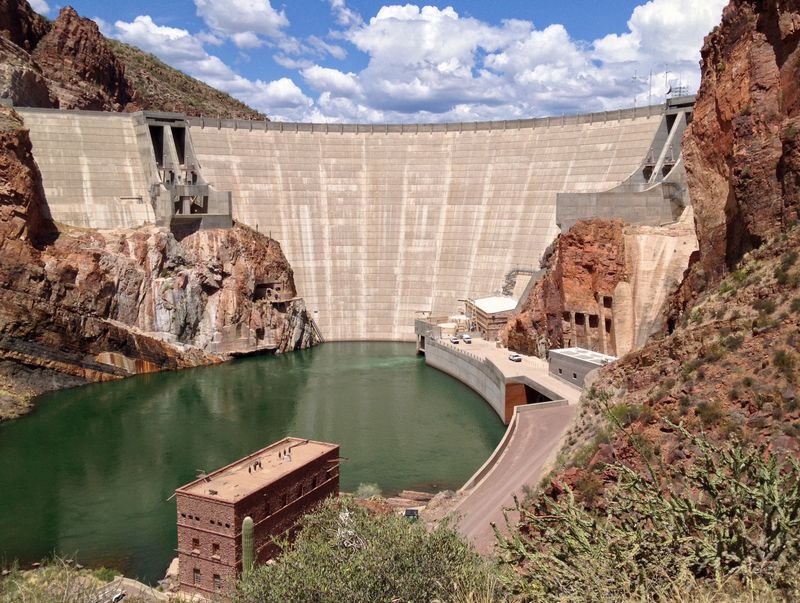
Theodore Roosevelt Dam stands as a monumental feat of engineering and a key landmark along the Apache Trail. Completed in 1911, this dam was the largest masonry dam in the world at the time, playing a crucial role in Arizona’s water management and agricultural development. Its construction marked a turning point in the region’s history, transforming the arid landscape into fertile grounds for growth and prosperity. The dam’s impressive structure is a testament to human ingenuity and determination, offering visitors a fascinating glimpse into the past. As you stand before this architectural marvel, the sense of achievement and progress resonates, reflecting the spirit of the early 20th century. The dam not only tamed the Salt River but also paved the way for the thriving communities that emerged in its wake.
8. Wildlife and Flora
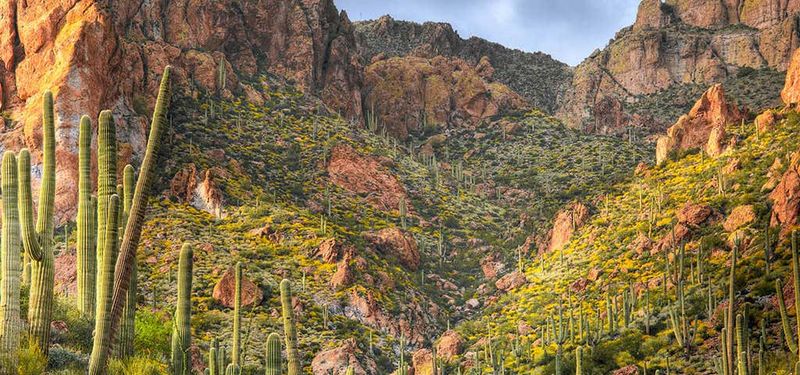
The Apache Trail is a vibrant tapestry of life, home to a diverse array of wildlife and flora that thrive in its unique desert environment. From the majestic bighorn sheep to the graceful bald eagles soaring overhead, the trail offers a glimpse into the rich biodiversity of Arizona. The landscape is adorned with iconic saguaro cacti, agave plants, and a myriad of other desert flora, each contributing to the region’s rugged beauty. As you travel along the trail, the sights and sounds of nature create an immersive experience, where every encounter with wildlife adds to the sense of wonder. The Apache Trail’s ecological richness is a testament to the resilience and adaptability of life in the desert, offering a harmonious blend of wilderness and tranquility.
9. Recreational Opportunities
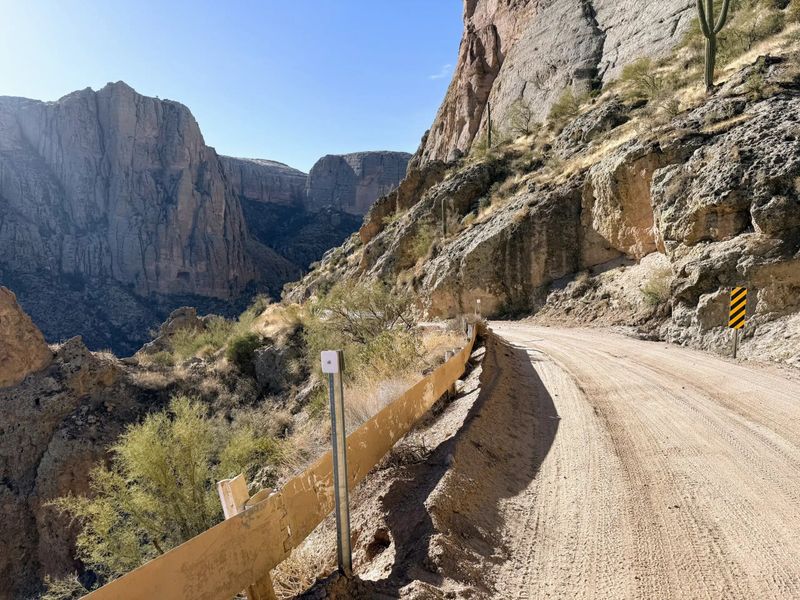
Adventure awaits at every turn along the Apache Trail, with a plethora of recreational opportunities for outdoor enthusiasts. Whether you’re hiking the rugged trails, camping under the stars, or casting a line into the sparkling waters, the trail offers something for everyone. The diverse landscapes and natural beauty make it a playground for those seeking both relaxation and excitement. As you explore the various activities, the sense of freedom and connection to nature becomes palpable, inviting you to embrace the spirit of adventure. The Apache Trail’s recreational offerings are a celebration of Arizona’s outdoor heritage, providing endless possibilities for exploration and enjoyment. Each experience along the trail is a chance to create lasting memories, where the thrill of discovery meets the serenity of the desert.
10. Road Conditions and Safety
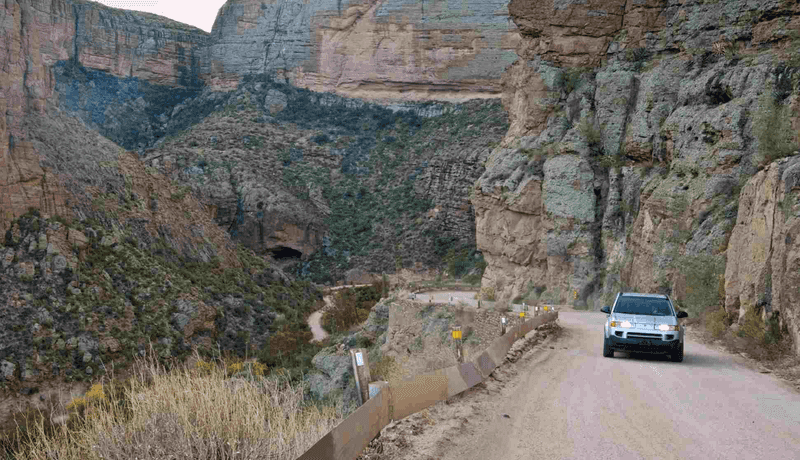
Navigating the Apache Trail requires caution and respect for its challenging road conditions. With narrow, winding roads and steep grades, drivers must remain vigilant and prepared for sudden changes in terrain. The unpaved sections demand careful attention, especially for those unfamiliar with the rugged landscape. For safety, it’s advisable to travel in suitable vehicles, avoiding large trailers and RVs on the more treacherous paths. Despite the challenges, the experience offers unparalleled rewards, with breathtaking views and a sense of accomplishment. The Apache Trail is not just a drive; it’s an adventure that tests your skills and immerses you in Arizona’s wild beauty. Embrace the journey with prudence and a spirit of adventure, and the trail will unveil its many wonders in return.

